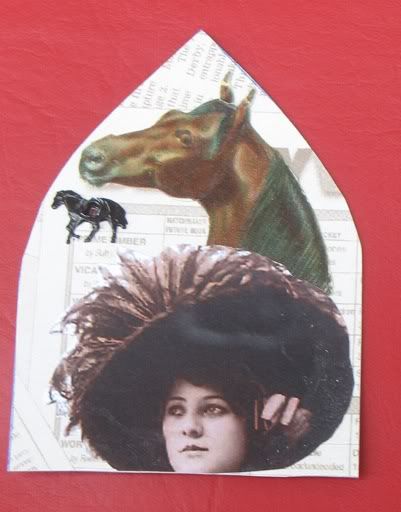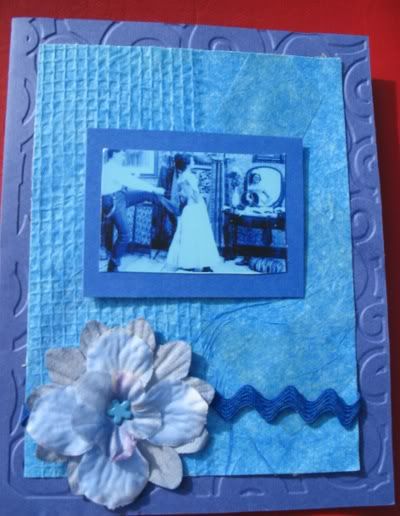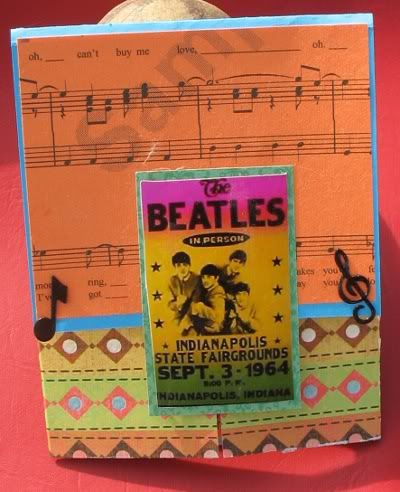1) With the intricate dies, rub a dryer sheet, like Bounce, in/on the die...not just a light wipe, but not like you have to put all your muscles into it. It cuts at least twice before you need to use the dryer sheet on it again. Deneen Treble
2) How to stay organized...article from Scrapbook Etc.
1. Clean up your space between layouts.
2. Invest in a labeler or create labels using return address labels. Use the labels to identify where your supplies belong.
3. For digital elements, create a filing system on your computer. Tag the different files you download so you can easily search for whatever element you need for a page.
4. Keep your oft-used items close at hand-either in boxes on your work surface-or nearby in a drawer or closet.
5. Purge on a regular basis. It might be hard to let go of some of those old supplies, but you can donate them to day cares, preschools, classrooms, or service
organization where they will be used and appreciated.
6. Commit to an organization system for three months. The only way to learn what works is to experiment. If you commit for a short period of time, you give yourself
mental permission to like or dislike the system without regret.
7. Determine your top three go-to items and store them together so you won't have to dig through your stash.
8. Dedicate a chunk of time to implement the system for ALL your supplies. If you only organize 10% of your supplies, you won't reap the rewards.
3) Painters tape comes in colors and different sizes. It can be used for masking. Painters tape releases easily from surfaces & does not damage cardstock unless the paper is delicate. Tear or cut to the right size, overlap it at the edges to create larger mask, apply the mask where needed, and when done stamping, remove the tape. To use painters' tape as a stencil, adhere the tape to wax paper and cut out or punch out the shape you need. Remove the wax paper and use the painters' tape stencil as you would any stencil. On the subject of masking when cutting masks cut them slightly smaller than the image you want to mask to avoid halos.
4) Plumbers tape (comes in a roll in different sizes) . Cut 2 pieces about 5" long. Peel off adhesive and attach to cardstock for a background and then sandwich in a Cuttlebug folder and run through. Daub with alcohol inks. You could also attach to cardstock and die-cut and cover with alcohol inks.
5) If you have no use for the baby's crib any longer, take it apart and mount the side rails (slat) as a single unit horizontally on your stamping studio wall. One set of rails can fit at least one hundred small, medium, and a few large wood mounted imaged and get them into view so you can find them easily.
6) Monoprints sound familiar but you can't quite place the technique? Essentially, you get a plastic folder, apply a dye ink pad, open and close the folder to trap air and 'blob' things up; insert glossy cardstock and press with your hands, Voila!!
7) Perfect Pearls Mist...when you spritz some glimmer on a card and have access on the mat underneath blot it up and transfer the blotted up residue onto another piece of cardstock. Don't drag just pat.
8) Instead of purchasing a large acrylic block for those big cling stamps try using your b & c clear plates from your Cuttlebug or any die cut machine
9) Hate foggy windshields? Buy a chalkboard eraser and keep it in the glove box of your car When the windows fog, rub with the eraser! Works better than a cloth!
10) If you seal an envelope and then realize you forgot to include something inside, just place your sealed envelope in the freezer for an hour or two. Viola! It unseals easily.
Just added these last 2 as I thought they were pretty neat






